4th year Bio Sci student at UofG! Interpreting nature through different lenses!
Don't wanna be here? Send us removal request.
Text
Hi Katie,
This was such a great blog! I love how you expanded on the importance of learning things through touching and seeing. I believe in today's world, a lot of focus is centred on theoretical knowledge and this leads to folks missing out on practical learning. I think exploring nature is a really important aspect for everyone and would allow for greater understanding and appreciation of nature. So, as nature interpreters, I think it is important that we focus on this form of learning.
When talking about inclusivity in nature interpretation, something that has been coming up a lot for me is interpreting for folks with disabilities. I have heard about museums for the blind where they can listen to description of the art and also touch them. This allows them to understand and feel the art and appreciate it. I think this will be an important aspect for me, keeping people's abilities in mind and helping minimize the barrier between ability and nature interpretation. I have read stories about folks with disabilities succeeding despite barriers and hardships, but I believe it is time that we ensure they do not have to face these additional hardships. And your post gives me a lot to think about!
As for the question, yes, I think there are a lot of people that have made me appreciate nature and to interpret it in many ways. My family, friends, classmates (especially in this course!), my professors, and also by seeing interaction between different organisms. For instance symbiotic relationship between organisms taught me that there is a mutually beneficial way to live, you can exist without privilege and all it does is inhibit growth and success of the society over all. I think it is astonishing how people that I did not think about taught me about nature, but also how nature taught me about society. I definitely have a lot to think about after this class and I hope this helps me grow and improve myself :)
ENVS*Final Prompt
Hello all!
This final blog post was such an amazing way of reflecting on how this course has change the way I view nature interpretation, and how I approach the communication of information in general. I am definitely someone who learns best by doing, I like to touch things, or see them in action! I learned this during one of our first units, when discussing how to teach to the different learning types and the difference between tangible and intangible elements (Beck et al., 2018). The reason I am bringing this up again is one component of the prompt we were given: Describe your personal ethic as you develop as a nature interpreter. The answer to this is deeply entwined with the rest of the prompt, but I’ll return to that later. The biggest ethic I believe in when it comes to nature interpretation is that everyone deserves the opportunity to understand the nature that they are surrounded by. This does not mean that that we should all have access to the same free online resources, though it does help, but instead that we are all given the chance to learn in a way that aligns with our needs.
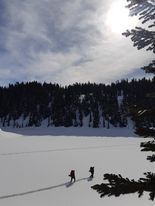
*Photo taken by me of my two friends crossing a frozen lake in Garibaldi Park, BC*
I started a program at UoG in 2014, graduated with a general Science, and went to Fleming college for Arboriculture, before returning to UoG to upgrade my degree. I learned that all of the book-reading in the world won’t help me retain knowledge the way that listening to a respected instructor, or physically applying my knowledge does. If I had been taught this at a younger age, I might have approached my education differently. This is why I deeply believe that we need to expand public resources surrounding environmental education so that it is not only given to those who can afford a college education, or courses from a private institution. Physical learners need to be given attention just as their counterparts are: starting in early childhood and throughout their developmental years. We need to break down the stigma that those who don’t retain well from intangible learning aren’t smart.
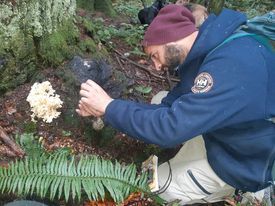
*Photo taken by me during a mushroom hunt and information share with my coworker in Coquitlam, BC*
So many of the people that I know who are in outdoor or environmentally central trades/professions stumbled into it later in life, usually due to the many physical faucets that this field has. They are some of the most well-educated people I have ever met, without spending much time at all in a classroom! My beliefs within nature interpretation are that by focusing on diversifying teaching methods we are able to connect more people to our cause. Opening up learning to everyone, despite their location, background, financial position, abilities, or personal beliefs would create a wonderfully inclusive culture around one thing that every human being shares: a reliance on the environment.
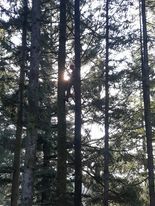
*Photo taken by me of a coworker pruning trees in White Rock, BC*
Our responsibilities as nature interpreters are to make this inclusivity possible, to be open to conversing with people, showing them what we know, whether or not they hold the same views as us. We should not argue with anyone, or try to change their minds, because everyone comes to love this earth in their own way, from their own place, as discussed between David Suzuki and Richard Louv in the video we were provided (Suzuki and Louv, 2012). All we have to do is open the door, and hope that they walk through on their own.
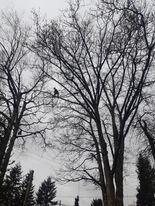
*Photo taken by me of a coworker pruning a tree in Langley, BC*
I am an arborist by trade, which means that I climb trees in order to identify diseases or hazards within them, prune for aesthetics and/or safety, and am often involved in tree removal. I entered this trade from a place of environmental consciousness, believing I was going to become a “tree doctor”, who identified issues and fixed them, only removing living trees if it was absolutely necessary. This is not the reality of my profession. I have seen many more trees cut down for urban development or due to unwise planting decisions than I had anticipated when I first began my career. I realized early on that people don’t see the benefit in their trees, such as reduced energy bills due to shading their houses on hot days, the way that they act as a sound barrier for roadways, the decreased likelihood of lawn flooding due to their roots up-taking water, and so much more. All they see are extra leaves to rake off their lawns. My coworkers often don’t see trees, especially big ones, as living beings, but instead as a fun challenge to kill that you can brag about later.

*Photo taken by me of a coworker removing a tree in Surrey, BC*
Through this course I’ve learned that we are all interpreters for each other, we’ve all seen and learned things that others haven’t. Sometimes by listening to other people’s experiences we learn about things we’ve never encountered, and sometimes our own piece of knowledge can help other’s connect the dots on how something works. At my job most of the people I work with don’t understand tree biology but have many more years of practical experience than I do. So when they remark on how a growth on a tree, that I probably never would have noticed, is “weird” or “cool”, I get the opportunity to explain the probably cause of it, and why the tree responds to certain stimuli the way it does. I hope that eventually this mutual enlightenment leads to a deeper appreciation for trees in both of us.
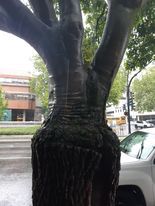
*photo taken my me, of a cool tree graft found in Victoria, BC*
In conclusion, this course hasn’t changed the way I see nature, instead it has shown me different ways to communicate my own view with others, and the value of listening to their response. There is no “one size fits all” when it comes to learning or interpreting, and, since we are all both interpreters and students, we need to have patience with each other, and try to see through the eyes of others. Only through connection to each other can we communicate our passions.
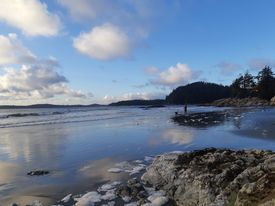
*Photo of my dog and I frolicking in Tofino, BC*
My questions for you are: have you realized through this course that someone in your life was a nature interpreter for you, and you never noticed? How have you been an interpreter for others before this course, and will your methods change now that it’s over?
Thank you to all of my classmates and our instructors, you’ve all taught me so much this semester!
Katie the Treehugger
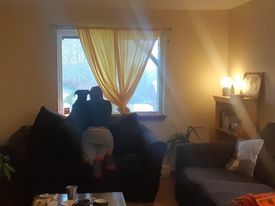
*Photo of my dog and I looking forward to our next adventure!*
Beck, L., Cable, T. T., & Knudson, D. M. (2018). Interpreting cultural and natural heritage: For a better world. Urbana, IL: Sagamore Publishing.
David Suzuki and Richard Louv @ AGO [Video file]. (2012, July 20). Retrieved March 27, 2021, from https://www.youtube.com/watch?v=F5DI1Ffdl6Y
23 notes
·
View notes
Text
Hi Alyssa,
I loved your post. A lot of my values and beliefs intersect with yours. I want to ensure that as a nature interpreter, the knowledge, resources and services are inclusive and accessible. And when I think about it, I want to ensure it is something that resonates with everyone. That means analyzing privilege and ensuring those without privilege get equitable access and opportunities. I think it is also important for me to understand that not everyone has the ability to access a lot of nature resources and services, so another priority for me would be to help those folks by researching or setting up resources for folks to ensure access- physical, mental, or financial.
And I agree, it is important to share correct factual information. I think it is important that people are able to see both sides on any story and make their own decision. I think false or incomplete information does more harm than good. For instance, the story of the starving polar bear that was advertised by National Geographic Magazine as a result of climate change was actually a polar bear suffering from muscle degeneration. The public outrage as a result of that false information is a good indicator that no one appreciates being lied to. I personally believe that trust is very hard to earn and easy to loose. So, being true to myself and others is important to me.
I loved your idea of interactive interpretation and I would love to see them actually come to life in the future! All the best :)
Here is the article describing the Polar Bear and National Geographic News fiasco, if anyone is interested in reading
https://www.cbc.ca/news/canada/north/emaciated-polar-bear-response-1.4788259
Becoming a Nature Interpreter
When I first enrolled to take this class, I wasn’t quite sure what the course would entail or quite frankly what exactly nature interpretation meant. Although I had some idea, I don’t think I really understood the magnitude that goes into preparing and properly becoming a nature interpreter. There are so many variables that all must be taken into consideration; from being accessible to all or as many people as possible, learning styles, historical significance and more.
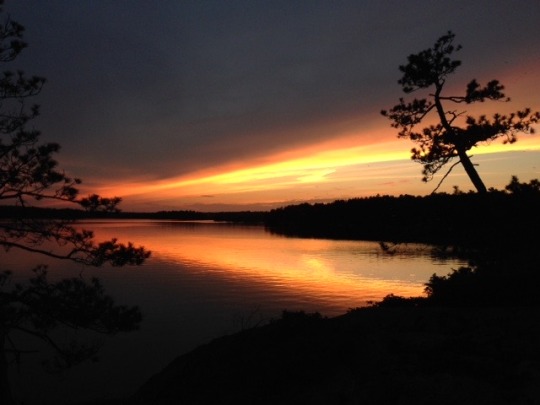
Photo taken by myself of a sunset at Koshlong Lake, Highlands East, Ontario (2015).
As a nature interpreter, a belief that I will implement is the importance of living harmoniously with nature. To me, living in harmony with nature means living sustainably. When we are living sustainably, we are meeting our everyday needs of the present generation while not compromising the ability of future generations to be able to meet their needs (Ikerd, n.d.). Through sustainability, we as humans, are able to find harmony amongst each other and within our surroundings. Additionally, for the harmonious sustainable ideology to work, the belief that humans are more than one-dimensional but rather multidimensional consisting of physical, mental and spiritual components that are interconnected (Ikerd, n.d.). If the connection between these components is unequal, it can result in the person becoming unbalanced (or not in harmony). This reconnection can be found through the combination of modern science technologies and traditional indigenous beliefs (Wang, 2020). The merger of these two concepts will aid in emphasizing the notion of sustainable development and environmental education while also increasing social productivity from the perspective of production (Wang, 2020). This belief, I believe, is crucial for being a nature interpreter as it demonstrates the significance of nature and that we are not be greedy but rather appreciative of the endless positive opportunities it provides us with.

This image describes some steps on how to become more sustainable within your everyday life. Retrieved from https://www.google.com/search?q=sustainable+living+examples&tbm=isch&rlz=1C5CHFA_enCA764CA765&hl=en-GB&sa=X&ved=2ahUKEwjk0uif3NXvAhUO0KwKHcjdBKgQrNwCKAB6BQgBENcB&biw=718&bih=789#imgrc=sfmc9a2NCB2JnM
A responsibility that I believe is important is being inclusive and respectful to the people who are trying to learn. As we learned throughout the semester, either from reading about the various learning styles in week 2 or from ‘unpacking’ our invisible backpack during week 3, no 2 people are the same and there are an array of backgrounds and challenges that people have to overcome in their life’s. As a nature interpreter I would have the responsibility to make sure that I am approachable. When I say approachable, I don’t just mean that people have the opportunity to come and talk to me, although that is important, I mean that the content I am teaching about is approachable to individuals of all incomes and social statuses. I have to realize and acknowledge my privileges and utilize them to assist individuals who are less privileged. However, this is challenge as it has to be achieved as respectfully as possible. This means educating myself through the help of those I am trying to reach out to and listening to them about how and what is the best way to interact with them.
The additional responsibility that comes along with inclusivity is being accessible to individuals who may have different learning styles or who vary in abilities. Again, I have the responsibility to acknowledge that us as individuals differ amongst our preferred learning styles; some are more visual and thrive off of visual aids while others are auditory learners and thrive when able to listen to speakers. By incorporating these various techniques into my interpretation, I have the chance to become more interactive while also reaching larger audiences. At the same time, as I am trying to support the different learning styles, I have to take into account that not all individuals are fully able. This is important when opportunities arise for nature walks or trips out in nature, these challenges must be recognized and overcome with the accessibility of others in mind.
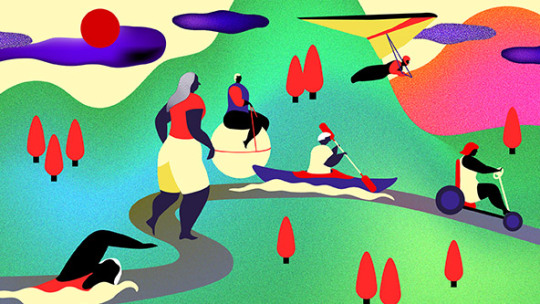
Image retrieved from https://ssir.org/articles/entry/using_diversity_and_inclusion_as_a_source_for_humanitarian_innovation
The final major responsibility I have as a nature interpreter is to be honest with my audiences and peers, however difficult that truth is. Nature is an aspect of human’s life that is presently being harshly exploited and destroyed. This destruction is happening in front of our very eyes through the ample examples of hundreds of species becoming either extinct or endangered every day, the deforestation of rainforests, and the loss of marine biodiversity. It is imperative that I education my audiences on all aspects of nature, whether it is positive or negative. It would not be fair to the individuals to solely speak on the positives of nature or solely speak on the negatives of natures, and how this information is told to the audience is important as well. This is a major responsibility as it relates back to the belief of being at harmony with nature. By expressing the good and the bad, with the adult audiences it may allow them to become more aware of their impact and make substantial changes in their lives whereas with children audiences it may provoke consciousness that they have never experienced before. When we are honest it allows for open conversation to happen which can lead to a sense of appreciation within.
The approach that is most suitable for me would be to keep the interpretation fun and interactive. Even though I stated that I have the responsibility to discuss the negatives that are occurring, this can be achieved through a light and interactive manner. When this approach is maintained throughout, it can allow the individuals to have a greater appreciation for the surroundings.
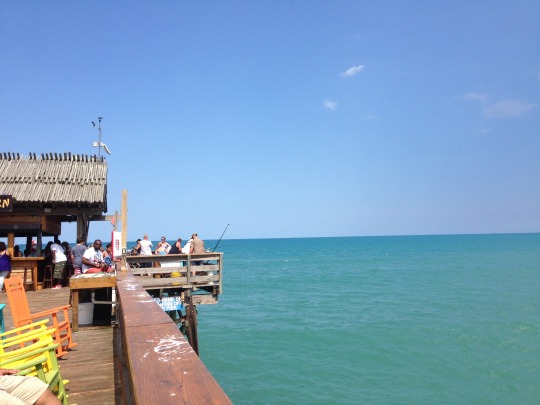
Photo taken by myself of the ocean in Cocoa Beach, Florida (2017)
This class has also opened my eyes to the intense reality of our relationship with nature. As demonstrated throughout the entire semester, nature is remarkably beneficial to humans and provides us with vast opportunities This course has also helped strengthen my own individual relationship with nature, showing me the impact of nature on humanity. But this relationship can become threatened when it is not appreciated or recognized properly, and I have learned through the various different techniques and lessons that come along with our responsibility to educate others on the significance of this relationship. Overall, I believe I am finishing this course a better and more knowledgeable person.
Thank you for the amazing semester!!
Alyssa
References
Ikerd, J. (n.d.). In Harmony with Nature. http://web.missouri.edu/~ikerdj/papers/HARMONY.html
Wang, Y. (2020). Sustainable human development means living in harmony with nature. Retrieved from https://council.science/human-development/latest-contributions/sustainable-human-development-means-living-in-harmony-with-nature/
6 notes
·
View notes
Text
What motivates me to interpret nature, and how does this define my personal ethics.
One of my earliest memories of interacting with nature is helping animals. Living in the city, one of the biggest issues in my area was birds being injured. We would frequently have requests to take care of these injured birds and aid them in their healing. I remember having a big cardboard box with newspaper setup next to the door. When a bird got injured, we would place it in there with a bowl of water, and give it time to get used to all the noises in the house. Later at night, my dad or granddad would use gloves and just look at the wings to ensure it was nothing serious, occasionally wrapping it. They would feed the bird some grains or sometimes milk formula through a cotton bud, if it seemed to be tired, dehydrated or weak. And eventually, after the bird would heal, they would release the bird in the park, or leave our backyard door open, allowing the bird to make that decision. This is what made me passionate about Nature. I wanted to help animals, but also understand them.

Lip Kee Yap, CC BY-SA 2.0 <https://creativecommons.org/licenses/by-sa/2.0>, via Wikimedia Commons. https://upload.wikimedia.org/wikipedia/commons/f/fe/House_Sparrow_%28Passer_domesticus_indicus%29.jpg
When I think about what ethics I want to bring as a nature interpreter, it is to always remember to help. While that was one of the first reasons why I was motivated to pursue nature interpretation, there are other values that are now an important part of me. These are - being honest, which means stating things as they are without exaggeration. Many times, I have come across climate change articles which exaggerate the current urgency of controlling climate change, but when these articles are proven factually and statistically wrong, public seems to think that climate change is no longer an issue or a priority. Another important value for me is sustainability.

Teodoraturovic, CC BY-SA 4.0-https://creativecommons.org/licenses/by-sa/4.0>, via Wikimedia Commons-https://upload.wikimedia.org/wikipedia/commons/c/c3/Morals-and-ethics.jpg
My responsibilities as a nature interpreter are a result of my beliefs and motivations. It is my responsibility to raise awareness of social and environmental issues while also making sure that I share correct information. In order to do that, I want to keep learning, keep doing better, keep researching and updating. My responsibility is not only towards nature but people who are getting information through me. And it is important for me that I do not misuse that faith or power I have.

Samurai Gandhi, CC BY-SA 4.0 <https://creativecommons.org/licenses/by-sa/4.0>, via Wikimedia Commons - https://upload.wikimedia.org/wikipedia/commons/8/88/Tree-of-Knowledge_art.jpg
As a result of these personal values, the most suitable approach for me, as a nature interpreter, is through consideration, understanding, appreciation, validation, and reflection. It is important to be considerate and understanding towards others and yourself. Be kind and appreciate all things around you and about you. Validate feelings and move forward while reflecting on these. This will ensure that my ethics and motivations are fulfilled and I give my best. By reflection I also mean to reflect on how to best get your message across, and to ensure it is inclusive and accessible.
I am sure that there are more values and motivators that will influence me as time goes on, and I hope I can include them in my personal and professional life. I hope I always keep learning and growing, and help others do the same :)
3 notes
·
View notes
Text
Hi Cameron,
This was a beautiful post! When thinking about nature, I don't think I have consciously thought about space. I think about how beautiful the moon and the stars are and how gorgeous the sunset/sunrise is, but somehow never think about how they are not technically on this Earth but still part of nature.
And I guess when you think about space you cannot not talk about Aliens! And how they must be a part of nature too!! So, not only a lot of nature on Earth is yet to be discovered, there is barely anything known about nature outside of Earth. How amazing is that!!! So many possibilities! And yes, Imagination is the limit!!
I believe this is the beautiful thing about nature, there is always so much to be learned! I think I am going to get my telescope out and my constellation books out and rediscover old things and hopefully find some new ones too!
Space. Unit 9 Blog Post
When asked this week to interpret the most amazing thing I know about nature, a smile came to my face. There’s a lot of things out there that are truly beautiful and magnificent when it comes to nature and the accompanying landscape. Whether that be the northern lights at the poles, the unfathomable existence of the sparkling stars in the night sky, or something as simple as waves rolling in the ocean of the difference in temperature as your draw closer to the equator; there’s something to be said about how it all makes you feel.

Gif 1 - Feelings
However, for this weeks’ blog post, I want to draw your attention towards the thing I feel is the most amazing aspect within nature and offer you my interpretation of it. Space. That’s it. For me, space and the accompanying elements that are held within it are truly something to behold. As someone who doesn’t necessarily believe in astrology, I want to explain to you just how gorgeous and awe-inspiring space can truly be. And before we jump the gun, yes space is apart of nature and the natural world we live in.
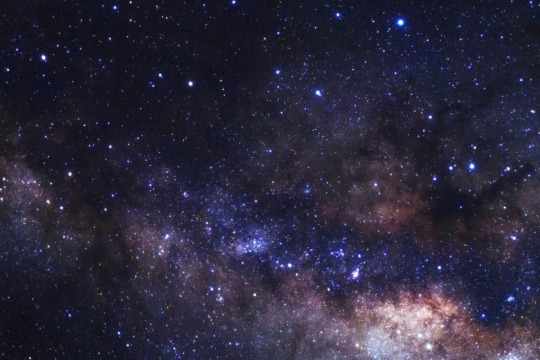
Image 1 - Space
Did you know that there are more stars in the universe than there are grains of sand across all the beaches in the world? That to me is just ridiculous to think about. Not only that, our star (the sun) which is located in our very own solar system is but a fraction of the largest recorded star in the observable universe.

Image 2 - Size Comparison
It’s hard not to get excited when thinking about things like that. It just seems so surreal to grasp the concept that we haven’t even seen what a portion of what nature in space can provide. I mean even looking at all the potential theories out there revolving around extra-terrestrial life, space travel, or even understanding the physics behind everything, it becomes a central talking point for your own interpretation.

Gif 2 - Aliens
For me personally, I choose to interpret this aspect of nature with a sense of wonder and exploration. As human beings, we always seeking to explore the unexplored. It’s natural and apart of our instinctive drive. What better place to do that than through space travel? While I can’t sit here and pretend to know everything about this component of nature, I choose to interpret the idea that space is something to behold.

Image 3 - Space Travel
Think back to when you were younger. Maybe you dreamt of being an astronaut and had your very own telescope to look at the night sky. I know I did. That feeling or sensation you might get from experience naturalistic beauty is exactly what I feel when looking into space. It’s something that will forever garner my interest and serve as an element in my life that draws me back to that kid wonderment of what else could be out there.
I interpret it as opportunity. Something so vast and far reaching that one could only dream of exploring fully. It’s your imagination. Your interpretation of space that brings about curiosity, happiness, and awe-inspiring sensations.
Image References:
Image 1 - https://thumbor.forbes.com/thumbor/960x0/https%3A%2F%2Fspecials-images.forbesimg.com%2Fdam%2Fimageserve%2F765877054%2F960x0.jpg%3Ffit%3Dscale
Image 2 - https://nineplanets.org/questions/how-big-is-the-earth/
Image 3 - https://www.aiche.org/conferences/space-travel-adaptive-research-and-technologies/2018
3 notes
·
View notes
Text
Immortality and Nature
One of the first things that absolutely boggled my mind as a kid was biological immortality. I read an article by Reader's Digest on how certain animals are immortal. Like the jellyfish Turritopsis doohmii which when suffering from an injury or dying, goes back to its polyp state and they regrows! REGROWS!! Can you believe that? Imagine getting a do over on life! I would definitely love to be a kid right now, with all the cool amazing toys available! Also, talk about evading responsibility or consequences of your actions!

A jellyfish in Antarctica, photographed by Henry Kaiser of the National Science Foundation. Henry Kaiser, National Science Foundation/Wikimedia Commons
And what about lobsters and turtles. Apparently, they would not die if not for predators, injuries or disease!! Lobsters and turtles don't exactly go through senescence as we humans do. How fascinating is that! And that is why, there have been individuals of lobsters and turtles whose age has been found to be over 100 or 200 years! Can you imagine! Watching the evolution of so many scientific discoveries and growth of things! I guess, it would not matter to them, cause what do they care about money, houses, taxes, cars, or even electricity! Well, except the fact that all these things deteriorated their quality of life by polluting seas, air, and land. So maybe they tell stories of cleaner seas to the young turtles that they meet, just like our grandparents tell us stories of the past :)

The Immortal Crustacean – Image by U.S. National Oceanic and Atmospheric Administration via Wikimedia Commons
Immortality. That was the one of the most fascinating thing about nature that I learnt. It also taught me that mortal beings can also be immortal. Though we might die, other organisms might die, we will still leave an impression. For instance, fossils! Dinosaurs died a long time ago, but we are still seeing and learning about them. They live through fossils and become a part of our knowledge systems. They were preserved. Though we are not getting preserved like that right now, even we are immortal. Through our social media posts, which will be there long after we are gone. Through the academic researches, poems, standup comedies, art, and what not. We will live through these systems.

James L. Amos, CC0, via Wikimedia Commons. https://upload.wikimedia.org/wikipedia/commons/e/e8/Archaeopteryx_fossil.jpg
So, in a way, nature taught me that even though we might one day not be here, our knowledge and some part of us will be passed on and we will be preserved through them. We will be kinda immortal. And honestly, that kind of reduces the existential crisis stress that I seem to go through every week in university :D

Longep Ed, Public domain, via Wikimedia Commons. https://upload.wikimedia.org/wikipedia/commons/a/a7/Immortality.JPG
I hope this post was interesting and fun for you, cause it was definitely for me! Here is the article that first got me thinking about biological immortality-
https://www.rd.com/list/animals-that-live-forever/
What about you? Do you know any interesting nature facts that you would like to share or that made a significant impact on you?
1 note
·
View note
Text
Hi Robyn,
I loved reading your post.
I have always loved music. And this particular dong by John Denver reminds me of road trips, picnics, hikes, walks in the mountains, waterfalls, and tunnels. I guess it might not make sense to anybody else reading these words, but these all are words associated wit my annual family trips. We would go to different cities and since I used to live in a city close to various hills, we would go to different valleys there. On the way there would be these gorgeous small waterfalls formed because of water collected on top of them, it always looked really refreshing! And the tunnels! My favourite part!! Though they were manmade, not natural tunnels, for some reason I loved going through them!
Throughout the trip, the radio would be playing. And no, this was not the song that played, they would mostly be Hindi songs, for some reason this song reminds me of all these things that I used to see during the trip. It makes me nostalgic and happy. It leaves me with a new found respect for nature and what it can make us feel, what it can mean to us!
Why John Denver Isn’t the Only Way Music and Nature Are Connected
Take Me Home Country Roads, one of the top hits of the 70s and a still well-known and beloved song today. Its the classic road trip, camping, and getting back to nature song loved by many since 1971.
youtube
(John Denver, 2013, 03:15-05:21)
As much as I love this country classic, it isn’t the only song that brings me back to nature, nor is it the only way music and nature are connected.
Music is defined as vocal, instrumental, or mechanical sounds having rhythm, melody, or harmony (Merriam-Webster, n.d.), and can be created by humans, animals, and even nature itself. For example, humpback whales use rhythms like those found in our own music and can even create musical intervals!
youtube
Humpback whale creating music! (Oceania Project, 2008)
Other animals such as birds and frogs also use sounds containing rhythm or harmony to communicate and express. Music in nature is everywhere, from the songs of birds to the drums of our ancestors it surrounds us and connects us. My favorite part when reading The Music of Nature and the Nature of Music was the description of the connection one gets from learning and understanding the meaning behind musical sounds of our own species and others (Gray et al., 2001). It adds a deeper more meaningful link between those that may appear so different.
This connection is so powerful that nature is often brought into music, even today. Whether it’s incorporating nature in music (such as babbling brooks in meditation music), discussing it (like Big Yellow Taxi by Joni Mitchell), or trying to bring you back to it (Cowboy Take Me Away by The Chicks), nature has been in music before we’ve even been involved. Many indigenous communities see the environment as part them and their culture and I can’t help but believe this includes music. While we don’t know when humans started making music, I would think it was early on. Wouldn’t you want to try and create or mimic the sounds and music around you? Or do you think it’s more complex?
I’ve always had a deep connection with music. As someone with anxiety, music has always been my escape. It can be hard to ignore constant negative thoughts, but with music your mind is focused on the sounds and rhythms, so I often surround myself with it. Since being in nature is another love of mine, many of the songs I listen to are usually connected to this. A personal favorite of mine is The Wind by Cat Stevens. Despite it being about examining spirituality and fate, this song always brings me back to my grandparents’ cottage, where we would spend time on the lake, take hikes in the forest, and enjoy it without anxieties. It’s a song that brings me happiness and peace.
youtube
(Yusuf / Cat Stevens, 2018, 03:15-05:21)
That’s the power of nature and music. They can elicit powerful emotions, create connections, and provide a means of communication. After all, why do you think music is one of the main forms shared across mass media? Music came from nature and it’s why, I believe, that many of us have such rooted connections to them, that can influence us in different ways. For instance, what do you think of when you hear John Denver and Cat Stevens? Does it remind you of nature or something else?
References:
Gray, P. M., Krause, B., Atema, J., Payne, R., Krumhansl, C., & Baptista, L. (2001). The Music of Nature and the Nature of Music. Science, 291(5501), 52. https://link.gale.com/apps/doc/A69270354/AONE?u=guel77241&sid=AONE&xid=fb9366a8
John Denver. (2013, April 5). John Denver - Take Me Home, Country Roads (Audio) [Video]. YouTube. https://www.youtube.com/watch?v=1vrEljMfXYo
Merriam-Webster. (n.d.). Music. In Merriam-Webster.com dictionary. Retrieved March 7, 2021, from https://www.merriam-webster.com/dictionary/music
Oceania Project. (2008, June 8). Whale Song. YouTube. https://www.youtube.com/watch?v=WabT1L-nN-E&t=30s
Yusuf / Cat Stevens. (2018, July 31). The Wind [Video]. YouTube. https://www.youtube.com/watch?v=F2f6xMuaawM
4 notes
·
View notes
Text
Music and Nature
Music is an important part of my life. And from what I have read so far, it has played a big role for most of us. This week's topic of Music and Nature got me really excited. There are a few songs that make me feel closer to nature, sometimes because of their lyrics, other times because of the feelings they evoke or the memories attached to them. I feel like it is such a unique way to interpret nature!
Music can take you back to a memory, a feeling, or just help you visualize things that you have never seen. It has the power to make you feel closer to so many things. That is why it is an important aspect in podcasts. With the right music, the listener can be engaged in more than one way. They don't just feel like they are listening to a podcast, but rather they are there experiencing the moment, a part of the conversation. They feel more connected and involved. This makes music an influential tool in nature interpretation.

Harmony in Nature - Wiki commons
Nature in music, this is not something I have interpreted before. But it is so apparent now that I think about it. Nature has rhythm. There is rhythm in flowers blooming, in the birds chirping, in the flow of the river, and in so many more ways. It creates a harmony. And I believe this inspires and motivates music. It lends to music that magic that makes us feel at peace.
youtube
For me personally, one song that makes me feel close to nature is - "Mitti Di Khushboo" - by Ayushman Khurana. It is a Hindi-Punjabi pop song. It is about the earthy fragrance that you smell before/after rain. It is beautifully written and as a person who really loves rain and storms, it brings me peace. It transports me back to my childhood bedroom, sitting next to the window during a rainstorm and smelling that amazing fresh scent, waiting for my dad to ask my mom to make 'Pakoras' cause it is the perfect weather for it. The song reminds me of home, I can smell that weirdly specific "rain" smell, and hear the bickering and laughter.

Rain - Wiki commons https://commons.wikimedia.org/wiki/File:GGB_refracts_in_rain_dropletes_original_1.JPG
This is why it is important to utilize the magic of music in nature interpretation. It evokes feelings in people, feelings we cannot fathom how to generate.
1 note
·
View note
Text
Hi Megan,
I love your outlook of the quote. It is so much different compared to mine. I think that is what is beautiful about unpacking a quote/statement, we see so many perspectives based on experiences of people. I agree with you and I believe that it is very important to collaborate with citizens, especially indigenous folks, in an area for effective sustainability and growth. They know their land and have knowledge collected over a long period of time, which most lack. They understand the land in ways we don't. That needs to be respected and honoured.
To answer your question, I think one way to live sustainably is through supporting and using local produce. And being conscious of the waste you produce. That means reflecting on your actions and making changes. As a part of this course, I do believe I have been reflecting more and have at least started making plans for turning this reflection into positive change.
- Jaskiran
Traditional Knowledge: The gift we robbed ourselves of

Graphic created by me. Quote accredited in graphic.
As a Canadian citizen, from European descent, reflecting upon this quote I am obliged to consider how Canada’s natural history was once shaped so beautifully by it’s Indigenous people- this is something that is very important to me.
First Nations people fished the Canadian shores with tools such as spears and nets, but also with their traditional knowledge (Pringle, 1997). For generations they passed down knowledge of fish growth patterns and migrations, thus allowing them to maximize the benefits of each catchment. Indigenous people have co-evolved with the landscape (Moola, 2020). They employ techniques that maximize the use and regeneration of natural resources in a way that causes minimal damage to the environment. One technique is “prescribed burning” which is the practice of intentionally setting fire to plants in a way that doesn’t burn it, rather stimulates growth and high yield (Moola, 2020). Another technique is fertilizing their gardens with seaweed they collected from the ocean, because it adds a high source of nitrogen to plants (Moola, 2020). Indigenous tribes have traditional knowledge that is wealth of information about plants and animals, allowing them to harvest and hunt sustainably to support their communities.

Pictured: A member of a native tribe in California practises prescribed burning to enhance crop yield and reduce the risk of dangerous fires. Source: NPR
As Europeans colonized Canada, they faced many challenges in terms of harvesting resources. Settlers didn’t know the difference between poisonous and safe berries, they struggled to produce high yield crops, and hunt native animals. Many indigenous tribes shared traditional knowledge with colonizers, allowing them to prosper (Moola, 2020). For example, many modern day pharmaceutical companies have exploited important medicinal plants in the Canadian Boreal forest that were cultivated by Indigenous tribes (Moola, 2020). Colonizers did not have the same understanding of sustainability as Indigenous people. In 1885 the Canadian Ministry of Agriculture stated “Unless the order of nature is overthrown, for centuries to come our fisheries will continue to be fertile” (Pringle, 1997). Even renewable resources were seen as something that could be fully exploited without the consequence of depletion. We now know that this is not true. As the Canadian population grew, demands needed to be met. A modern day fishery operator in Newfoundland stated “What we have here today, is a legacy of having to find fish and having to find places to process it”. Our ability to exploit resources is better than ever before. Technology has changed, and nature has co-evolved with it.
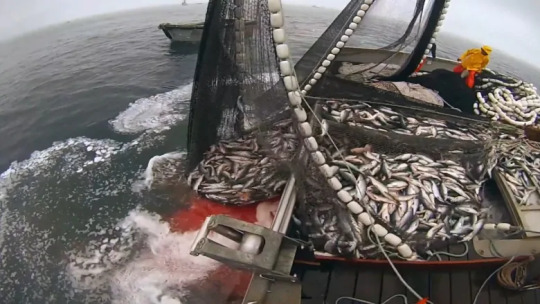
Pictured: a fishing boat with a large net captures a school of fish. Source: CBC News
As discussed in class, nature is dynamic (Beck et al, 2018). And so what this quote means to me, is that its important to understand that nature didn’t always look like it did today. In Canada’s natural history, it was much more pristine. That being said, it won’t always look like this either. It is ignorant to believe it will, especially while we still face issues like climate change, pollution, and the exploitation of non-renewable resources. We must keep history in mind if we want to learn from our previous mistakes of over-fishing. The decimated fisheries are a legacy of our ignorant colonial mindset. Indigenous people played a huge role in shaping Canada’s natural history. It was not until colonization that so much pressure was put upon natural areas here. We must be more in touch with historical traditional knowledge so that we can live more sustainably, protecting the future of Canadian nature.

Doig River Tribal Members pointing to the K’ih tsaa?dze Park sign. This is one of the only Indigenous Protected Areas in British Columbia. Source: David Suzuki Foundation
Can you think of historical examples of things that are now banned, that were awful for the environment? (Eg. like a doctor telling you to smoke cigarettes, but for nature). Can you think of some ways to live more sustainably in your own life?
References:
Beck, L., Cable, T. T., & Knudson, D. M. (2018). Interpreting Cultural and Natural Heritage for a Better World. Ed: 1. Sagamore Publishing.
Moola. (2020). Personal Communication: GEOG*3210, Management of the Biophysical Environment.
Pringle, H. (1997). Cabot, Cod, and the Colonists. Canadian Geographic. Retrieved from: http://www.canadiangeographic.com/wildlife-nature/articles/pdfs/atlantic-cod-cabot-cod-and-the-colonists.pdf
6 notes
·
View notes
Text
Nature and History
There is no peculiar merit in ancient things, but there is merit in integrity, and integrity entails the keeping together of the parts of any whole, and if these parts are scattered throughout time, then the maintenance of integrity entails a knowledge, a memory, of ancient things. …. To think, feel or act as though the past is done with, is equivalent to believing that a railway station through which our train has just passed, only existed for as long as our train was in it.

Pulmonata- Wikipedia Commons, https://commons.wikimedia.org/wiki/File:Pulmonata.jpg
History plays an important role in interpreting nature. It fills the gaps, it makes connections, it helps us form a memory of what might have happened and what will happen. Not only this, but historical records, like cave paintings, scriptures, sculptures, etc., help us understand the relationship between people and nature during that time period. It helps us discern myths from facts. And I think, that's what the above quote means to convey. History tells us a story that leads to the present. It helps us join pieces together as well as make connections across cultures. Recorded History helps answer many uncertainties in the present as well as determine the accuracy of resources. As a kid, I was fascinated by mermaids! I loved the water and I loved watching underwater videos. Being a mermaid seemed like the right course of action. But as we know, they are myths. How do we know that? I watched a lot of shows on Discovery Channel and National Geographic focussed on Mermaids. They explained how mermaids originated from stories of sailors, who had been away from land for too long, and many times hallucinated or misunderstood what they saw, probably due to fog or other factors that impede vision. In fact, the first description of a mermaid was 'a monstrous fish who takes a shape of a woman'.

1604 report on mermaid sighting - https://commons.wikimedia.org/wiki/File:A_most_strange_and_true_report_of_a_monsterous_fish._1604_rotated.jpg
Based on other collection of records, scientists believe that it was probably a walrus or a seal with seaweed on its head, giving the appearance of hair, that the sailors mistook for a mermaid. Due to lack of true evidence on the matter, I do believe this theory is more plausible. My point in telling this story was, this is how history helps us. Not only does it form a memory, a timeline, it discerns truth from misinformation. It helps us make sense of things. And by not considering the past, you are intentionally limiting yourself.
For me, this is what the quote by Edward Hyams, in Chapter 7 of The Gifts of Interpretation, means.
0 notes
Text
Hi Nadine,
I enjoyed reading your post so much!
I have enjoyed many family picnics and hikes but I do not believe we have done as many outdoor activities as you have! But they sound so fun and I think that is going to be my goal this year! I am going to try at least one outdoor activity this year with the aim of enjoying myself! I am still in Guelph and do not have access to a car, so I guess it will be hiking, but I will try and keep notes of interesting things- trees, bird calls, insect sounds, mushrooms, rocks, and maybe some interesting sites I might come across.
I also love the fact that you talked about how you cannot expect to ace it in the first time. I am sure, I will get tired really quickly. But I am going to be listening to my body. If it says I need rest, rest it is! It doesn’t need to be done in one day! It is a process and I think we need to let it take its course.
Your post gave me some great ideas in facilitating my hikes! If I go one one during this semester, I will definitely be posting about it!
-Jaskiran
Making it Fun, Helps make it a Habit
It has often been brought to my attention by friends or peers that they envy the amount of time and activity spent by my family outdoors. I was raised outside, we camp, canoe, hike, run, bike, snowshoe, ski and pretty much are willing to try anything at least once. So I often never think about how abnormal this may seem to some individuals. I realize now that growing up in an active family made enjoying and being outside a habit, but also attitude is EVERYTHING.
In my personal opinion, if you ain’t having fun, you’re not doing it right. I’ve taken friends out for beginner hikes often with comments of comparison how they are tired or not as able as I, but like anything you need to train. You can’t hike once and think you are ready to tackle Mnt. Everest. The mindset of “I should be good at things, the first time” is such a plague of our generation. If you are always comparing yourself, you will never be happy and if you aren’t happy you won’t enjoy getting outside.
Some tips and tricks, I have tested and found effective over the years are:
1. Be Goofy: The only thing you are focused on when your being goofy is having fun. You aren’t worried about keeping up with the Jones and you aren’t checking your fit bit every five minutes to see how far you’ve gone. You are enjoying the moment, the laugh and you are making good lasting memories.

My friend Alanna and I taking pics while skating on Georgian Bay.
2. Investigate your surroundings: Hear a bird call you’ve never heard? See a stream and want to know where it leads? Learning about the world that surrounds you can lead to comfort and entertainment for your brain while your body enjoys its vitamin D. I personally like to do high speed tree identification while I’m running, skiing, biking. Learning about the different trees tells me about the habitat type, what types of animals I could find. Plus trees are so unique and they each have their own story.
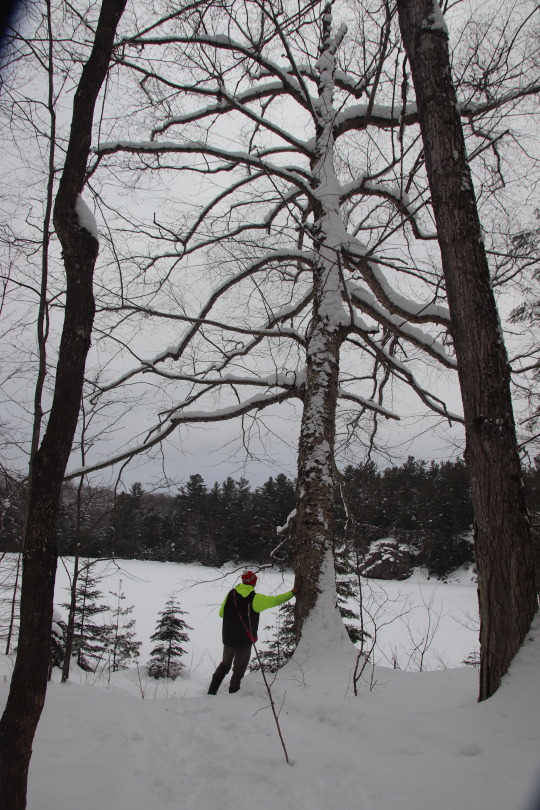
.My Partner and the biggest Yellow Birch (Betula alleghaniensis) we have ever seen. Which is saying something because my partner is an Arborist by Trade.
3. Go with your pet: Those cold days you want to curl up in front of the fire and never leave your house. I know I have those but I always take my best buddy out for a hike because he deserves it. Pets can be great motivators to go for that extra KM or explore a remote area so he can run off leash.
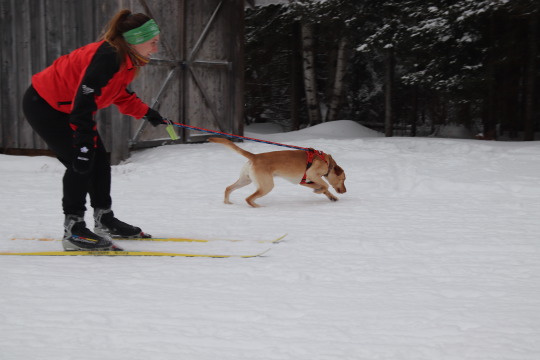
Teaching Fin to do Skijoring. This was his first time. He is turning into quite the ski dog these days.
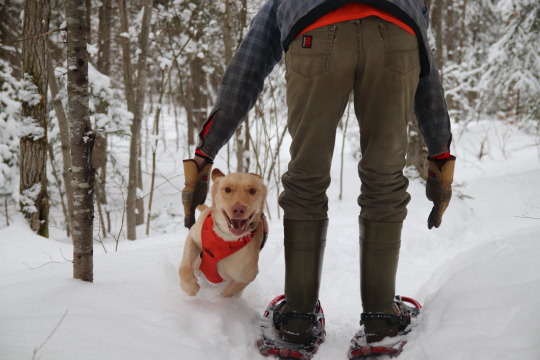
Snowshoeing with Fin. He is such a happy boy and LOVES to be outside.
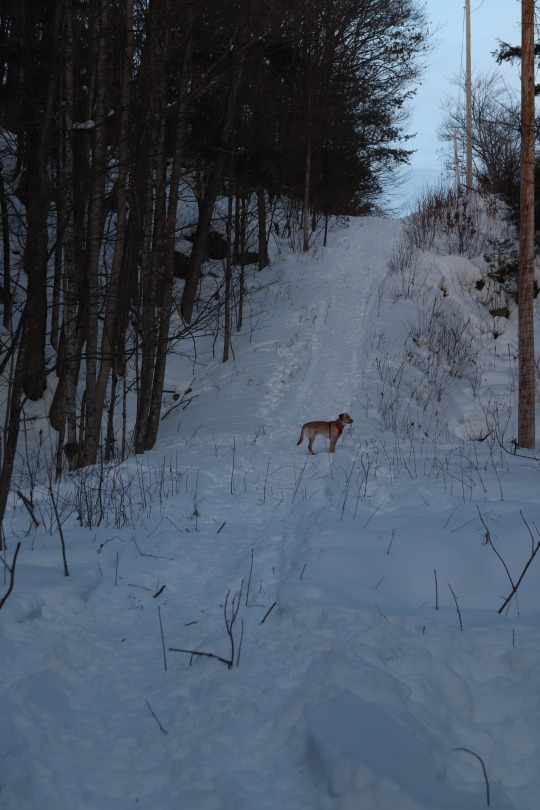
I call this hill “ problems” and I ask Fin every morning if he wants to go tackle our problems. Trust me its quite a bit steeper in person.
These are just my top recommendation on how to change your perspective on outdoor activity. Doing something that you think is FUN will make you want to do it more often. I’ve been told that the more often you do something the easier it becomes a habit. Getting outside is a good habit to have (as long as it’s 6 feet away from the next person, for now anyways).
9 notes
·
View notes
Text
My Relationship with Nature..
In the first week, we were asked about our current relationship with nature. I deleted that post because it did not feel right. After a lot of reflection, through various projects, I think I am beginning to understand my relationship with nature.
I am a learner or a pupil. Nature teaches me. Something about itself and something about myself. I learned, that nothing is perfect and everything is perfect. What I mean by that is that, no particular shape of trees/clouds is perfect, all of them are unique and they are perfect just like that. They may seem weird shaped compared to another tree, but they are exactly the way they are supposed to be. There is a process to growth and it never stops.

Enchanted forest- Creative Commons
nature also calms me down. If I am ever overwhelmed, I like to go for walks, away from people, around trees or if in a city- I like to go to gardens. These walks rejuvenate me and also clear my head. They give me a sense of serenity. I think this was something that was always present, nature always calmed me, but I have come to appreciate it more as I have grown up. Maybe because I have better understanding and appreciation of things, or perhaps things are more complicated now so I appreciate the calm more. Whatever the reason, I am glad that I have nature as a ‘support’ for me.

Juhu Beach, Mumbai, India- Creative Commons
Beaches remind me of home. I was born in Mumbai and it is right by the sea. My favourite memory is sitting on a blanket on the beach and eating shrimp with my family. I love the feeling of sand between my toes and splashing of water on my feet. Every time I hear water splashing, I am transported back to one of my first memory at the beach, holding my grandfather’s hand and being too scared to eat shrimp (I was a picky eater :D). Beaches are not the only thing that remind me of home, rain does too. I love the smell of wet soil. I love the pitter patter or rain or the growl of thunder. It makes me happy. And nostalgic.. and homesick. But then I do have my walks near the dairy bush to calm me down :)
I have grown up around nature, taking care of wounded animals, nature taking care of me. And that is the relationship I want to maintain. I also want to acknowledge how privileged I am to have this experience, to actually enjoy the things I have. And that is not something I ever want to take advantage of.
I hope I can carry all these things to my future and as a nature interpreter too!
1 note
·
View note
Text
Hi Tim,
This was a great post! And I love your art! It is gorgeous. For some reason it serves to remind me what we will be losing if we don’t protect the environment.
I also appreciate how you mentioned vulnerability and risk associated with art! That doubt, what if no one likes it? I think it takes a lot of courage to admit it out loud. I used to love writing short stories or quotes. But never had enough courage to share them, fearing how people react to it. At some point, I just wrote it out and posted it as a caption with a pic. Most people did not comment on the caption and no one laughed about it. So, I guess that’s a win! Now, after 6 years, I feel like it was a lame quote and just want to delete it. But I don’t because it remind me of growth and taking a risk, which did not go too badly.
I have been getting more into painting and expressing myself and the example above gives me the strength to share with others. It is not perfect, but it tells my story. And I think that is one thing I am going to take away from your post! To take risks, even if I am scared of failing. Because, what if I don’t. And to keep trying, keep growing, because that’s what nature teaches us!
Happy Little Clouds: Art and Nature
Beauty is often something we attribute with nature. I mean if you ask someone to name something beautiful without thinking they probably would say flowers, or the ocean, or maybe a sunrise. Nature has an innate beauty that we all seem to organically appreciate. To me that’s the “gift of beauty,” it’s the unspoiled natural state of the world in which we feel. It’ the inherent emotions that the natural world can make us experience in it’s raw state. I think that’s why nature and art go so well together. I mean you can look at a painting of a winter forest and your body can feel the cold or hear the crunching of snow. Art is an incredible tool that an interpreter can use to entice an emotional response, and the best part of art is that it’s subjective…

Personally sunrises always make me stop to reflect. There’s a sort of stillness that they always express for me. (Photo by me)
Now I’ve been pretty excited to talk about this subject. I love art…well that’s a bit vague, what I love is drawing. I think since I could hold a pencil I was sketching. In school I would often tune out of class in order to doodle something on my worksheets (much to the chagrin of my teacher who was just trying to teach me what a noun was). What I eventually learned was that I had found an outlet. I would express myself though pencil and paper whenever I could, and more often than not, I found my expression was of the wild world I loved so much. Through my own passion, and how people would react to them, I personally found the importance of visual story telling.
With that in mind, I took some time to reflect to when we were asked what we thought our roles as interpreters could be. I gave some thought about to my passion, and if that was the real way in which I wanted to express myself as an interpreter. The answer was complicated to say the least. I mean I really do love expressing nature through art. However, to me there is also something very personal about art. When you express art you make yourself vulnerable, you open yourself up to criticism. You may look at something proudly, and then begin to see the “cracks” in your art, you may be afraid that people will judge you based off what you produced. Like most fear, most of it is irrationally self inflicted…But then again, what if it isn’t? That’s a scary thought. I mean if you put everything you had into a piece of artistic expression, and then someone tears it down what does that say about you? Is your message weak? Are you not good enough? That’s where my apprehension comes for saying I want to be an interpreter who uses art to express a message Am I willing to risk ridicule? But then there’s the flip side, what if the risk pays off? What if I show that nature is something, we can experience any number of ways? Isn’t that what being an interpreter is all about? I don’t have easy answers for any of these questions. Perhaps that’s the journey I need to take as an interpreter, to discover what expression I can make to reach others, and what I am willing to risk in doing so.
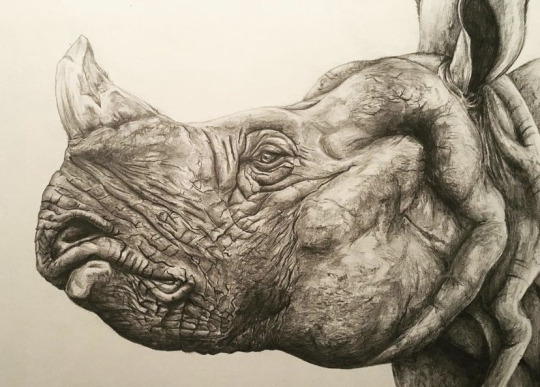
One of my art pieces I made a few years ago. I always have an apprehension sharing personal creations, but perhaps the best way to inspire others is to share what inspires you
PS. I think a great example of visual story telling is something National Geographic created called the “Photo Ark.” It is a catalogue of animals shot very basically, but they have a bit of information about the animal. These photos express both common and endangered species. It is a great way to show the diversity of life on our planet and inspires people to look more into them. Check it out here
- Tim
8 notes
·
View notes
Text
Hi Nicole,
I loved your post! I never thought about cooking and how it connect us to nature, but now that I have read your post, I cannot not make that connection! While I do not have a garden or go foraging for wild edibles, I do love visiting the farmers market and getting fresh and colourful veggies! Last time I got basket shaped zucchini's in 3 colours! And yes, I agree, the end product did look like a piece of art and made me feel closer to nature. I also started gardening! Mostly chillies (4 different kinds), strawberry, tomatoes, marigold flowers, and herbs. Sounds like a lot but I am just getting them ready for summer, so, we will see how many survive!
Something that I do that I think is unconventional form of using art for nature interpretation, is listening. Sometimes I wake up in the morning and just listen to the birds or the cold air swishing by my window. I love sitting by the window and listening to rainstorms or thunderstorms. They make me feel peaceful. They also make me think about nature and how trees and plants feel rejuvenated, how animals seek shelter, and how some seeds will sprout. It reminds me of how nature grows. How in our busy life, we might miss all these small miracles happening, because we were stuck in an office or on a project. It makes me appreciate nature.
this was an amazing post!
-Jaskiran
Nature Imitates Art
I’m sure you have all heard the famous quote by Irish poet Oscar Wilde, “Life imitates Art far more than Art imitates Life” (Willoughby 1993). When I was younger and heard this quote, I didn’t quite understand it, but I’ve learned to grow to enjoy its concept. This quote emphasizes that what is found in nature is not objectively there – it is just how artists have portrayed it to people through their lens. I think this really reinforces the idea that everyone perceives nature differently and that nature has a different meaning and connection to everyone. I also interpret this quote in an alternative way; I believe aspects of nature can be so beautiful that they appear otherworldly, just like art. Sometimes when out in nature, you’re looking at an image that is indescribable, almost fake-looking like an artist painted it on a canvas. This is one of the many ways that nature interpretation and art are connected.

Photo by me: Kingsville, ON 2020.
There are a few methods of nature interpretation through art that I particularly enjoy. The first is nature portrayed through the art of cooking. I personally enjoy gardening and growing my own food and herbs, along with foraging (sustainably of course) for wild edibles. Cooking with these things is an art form for me because it makes me feel more connected to the environment in which they grew. Not only does it deepen my connection with nature, it really can look like art! I adore edible flowers because they are beautiful on almost any dish and are quite tasty. When reading the content for this unit regarding the Group of Seven, I was reminded of an episode of Master Chef Canada that I watched recently where the contestants had to make dishes inspired by the artwork of the Group of Seven. They had to create three dishes that represented water, air, and land through food. For those who enjoy cooking (or eating!) this is a great way to expose them to nature interpretation on their very own plate!

Photo retrieved from: https://food.allwomenstalk.com/stunning-edible-flower-recipes-that-are-almost-too-pretty-to-eat/
Similar to cooking with wild edibles and plant resources from nature, forming dried herb/flower mixtures for teas, tinctures, beauty products, etc. is a passion that I’ve been getting into the past couple years. When I’m able to create nature-derived mixtures that I can use everyday, it is an art form for me. It’s not only healing, it’s incredibly rewarding to learn new knowledge about the medicinal values of these plants. It allows me to be less reliant on people outside of myself for products like medicines and skincare, and allows me to develop skills I can use for the rest of my life and hopefully share with others.

Photo retrieved from: https://thenerdyfarmwife.com/how-to-harvest-dry-flowers-herbs-from-garden/?utm_source=pinterest&utm_medium=social&utm_campaign=SocialWarfare
When looking at the concept of “The Gift of Beauty” it’s clear that nature interpretation should create not only a space for people to acknowledge the beauty that surrounds them, but should promote ideas surrounding preserving the given resources (the lands, waters, animals, plants, etc.) (Beck et al. 2018). Nature interpretation through the art forms of creating food and homemade medicinal products reinforces the idea that these plants and their homes must be preserved, otherwise these forms of creation could not exist.
Are you interested in growing food or foraging for wild edibles? Or are there perhaps other “unconventional” art forms of nature interpretation that you enjoy and/or partake in?
-Nicole :)
References
Beck, L., Cable, T. T., & Knudson, D. M. (2018). Interpreting cultural and natural heritage: for a better world. Sagamore Publishing.
Willoughby, G. (1993). Art and Christhood: the aesthetics of Oscar Wilde. Fairleigh Dickinson Univ Press.
6 notes
·
View notes
Text
Hey Mary,
I loved your post! To be honest, I am quite scared of insects! Mostly because they are small and can suddenly disappear from your eyes, as well as the fact that most of them do not feel the best when touched. But I do love looking at them online! And learning more about them. I have always felt like looking at art when observing them, because they are so small yet have so many intricate details! Also, they perform most body functions like any other organism! They scare and intrigue me at the same time.
I also loved how you have already started working as a nature interpreter for the folks at the cemetery! I think that is phenomenal!
While I am not planning on touching them anytime soon, I do read about local bugs and insects and here is a cute one that I came across at UofG Arboretum. unfortunately I have not yet observed it myself, but online pictures are pretty cute too! It is called Rosy Maple Moth (or specifically Dryocampa rubicunda). They are fuzzy pink and yellow coloured. Here is a picture attached! Hope you enjoy it!

Rosy Maple Moth- Wikimedia Commons
Art in Nature

My love for nature has always walked hand in hand with my love for art. While I am not an amazing artist, I do put effort into my work and I find peace while I do it. As I spent time outdoors the beauty inspired me constantly, as the world has endless wonders to look at. My imagination always surpasses my skills, but I love to imagine humans intertwined with nature. This has made me see the how intricate and detailed the nature can be, from the scales of a butterfly to the veins in a leaf.
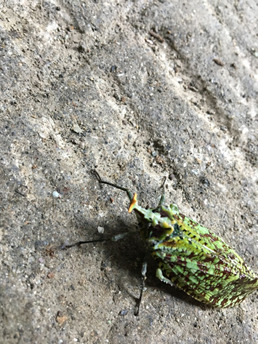

I think that my love for insects has also improved my capabilities when it comes to interpreting nature through art. I say this because I think that insects are greatly overlooked, and if you take the time to examine them, you see how gorgeous they can be. I have only been collecting insects for a few years now, and still people are amazed at what I show them. There are so many amazing and complex insects out there, and people do not even know they exist. They can be neon green or neon pink, they can have spots or stripes, be large or small, intricate, or simple. I have found that people are often surprised or amazed at what insects I show them because they are something they have never stopped to look at before. I love that I have a crew of older men working in a cemetery looking out for cool insects or interesting thing outside to show me. I work with a team of older men as groundskeepers at a large cemetery, and after annoying them with bug facts and bringing bugs into the breakroom, they fell under the influence of seeing what nature has to offer.

I will continue to look for beauty EVERYWHERE in nature, from moss to eagles, I want to admire it. I am curious if anyone has a photo that they think truly shows how beautiful nature is, whether it be an animal, a plant or a view! I’d love to see what people find beautiful.
5 notes
·
View notes
Text
Relationship between art and perfectionism, and how it relates to nature.
Recently I started working on this project with a group of folks in Guelph, called F*ck Perfect. It works with you on a journey of self discovery and finding growth, or achieving whatever you want. They also break pre-existing notions set by society around art and perfectionism. We grow up feeling and learning that to do art, we need to be perfect, or the end goal is something perfect. It works towards breaking these notions and starting on a journey of creative risks.
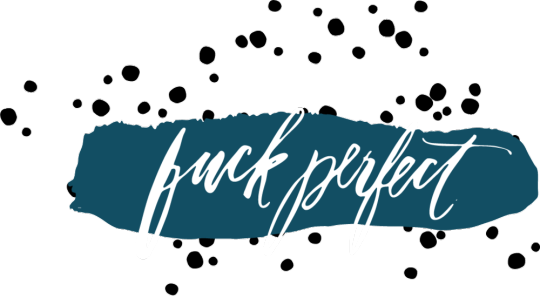
Art Not Shame, Guelph- Fuck Perfect Workshops.
Ever since I started working on this workshop, I realized how many times when we are expected to do something, we try to be the best or feel like we failed. During lockdown (all the versions of it :D), I started working on a new type of art. I have done water-colour, acrylic, soft pastels, repairing jewellery, journalling, crochet, embroidery, craft, drawing, and what not! And every time I did something new, I would be too focussed on the end product- to make it beautiful and perfect. I never reflected on how the process made me feel, why was I doing it. By journalling for this workshop and later processing things, I realized that it was during the times that I was painting, I was processing my feelings with COVID-19, being isolated, struggling with work, and being burnt out. While I was stressing about making that piece perfect, I forgot about the fact that the process of making that piece of art (moving the brush on the canvas, needle on the cloth) was actually very therapeutic and was actually the best stress buster.

The painting that I made through the university’s art stress buster series, December 2020- photo taken by me.
Why am I talking about this when talking about nature interpretation? Something that I noticed while reading through multiple posts was folks fixation on “good art” by “great artists” can create feelings/connection with nature. I don’t think that is true. I think every small piece of art, made by anyone, can play a role in nature interpretation. While my favourite poem is by Oscar Wilde, I do enjoy the random rhymes that slip into conversations, and honestly its these rhymes and not poems by great poets that I remember with a smile on my face. I think every small piece of art- grainy/unfocused pictures, undeveloped music, a kid’s stick figure drawing, journal entry- literally anything that speaks to you, can be a great interpreter. You just have to allow yourself to appreciate it.
As a way to incorporate this in my life, I took a little advice from my friend, and I no longer throw away art that does not look like what I wanted it to be. I used to call it mistakes, but now I just call them creative opportunities! I will paint over them or try to draw something with a black marker on them and integrate it together. Or, I just leave them as is, just cause they still remind me of the sunset I saw! Others might not see they same sunset as me, but I know what it means to me and what it remind me of. Hopefully, to others, it reminds them of something else they saw! In my small ways, I am fighting the urge to be perfect and embracing my imperfections.
How do you think you could break the pressure to be perfect and embrace yourself?!
6 notes
·
View notes
Text
Hi Anja,
I really liked your post! The painting that you showed, hanging in your room is gorgeous. It reminds me of home. Sitting by the sea, on the rocks, listening to the waves crash against them and feeling the water splash against your feet. It makes me feel calm, and nostalgic. And yes, it makes me feel closer to home and nature. It puts into perspective what I want and why I want it. It was the sea and the mangroves in my city that first got me interested in nature. I used to be so fascinated by them and always wanted to keep learning more about nature. I also enjoyed giving my younger cousins science lectures! And that is why I decided to go into wildlife conservation. And I think that is why I love what you said at the end- “I cannot make someone interpret nature through art, but... as an interpreted I can create interpretive experiences that can help people discover beauty in the landscape they are seeing”. I think that is beautiful and something I am always going to remember. People might not always see what I see, that does not make their interpretation wrong. All interpretation is valid and is shaped by the experiences we have or haven’t had. It is important to understand and support that in our roles.
The Intertwined Relationship of Art and Nature
Who I am to interpret nature through art? No-one! I don’t know anything about art, but I know art helps bring me closer to nature and I can appreciate beautiful art when I see it. Even though I know nothing about art, I knew I wanted art on my bedroom walls that captured the beauty of nature so I could feel connected to the natural world. When I was searching for a painting, I knew I would “just know” when I found the right one.

A photo of the painting on my bedroom wall – photo taken by me.
This painting (pictured above) now inspires me everyday from the wall above my desk. When I look at this scene, I imagine myself sitting on the dock and I can feel the cold water on my feet, hear the boats gently knocking against each other, smell the pine trees, and see the water lapping at the rocks.
However, the sensations and positive emotions this painting sparks in me will not be the same for other people. This painting makes me feel energized, excited, hopeful, relaxed, and happy because it reminds me of times spent at cottages we’ve visited and other rural locations where I have seen similar scenes in real life.

This photo I took of the shoreline of Skeleton Lake in Utterson, ON, reminds me of my painting, and for me this photo is a memory of a happy time spent with my family.
My painting makes me feel so connected to nature and my family because I am lucky and privileged to have had access to nature and spaces where I could create the happy memories that come to mind when looking at my painting. As we discussed in last week’s posts, not everyone has the same privileges that allow them to access nature the same way, and even if they did, everyone interpret nature and art differently. When writing this blog, I was reminded of the song “Unwritten” by Natasha Bedingfield that came out in 2004:
youtube
One of the lyrics in the song is particularly relevant to nature interpretation:
“Feel the rain on your skin
No one else can feel it for you
Only you can let it in”
I think these lyrics answer the question “How do you interpret ‘the gift of beauty’?”. I could describe the images and scenery in the painting, or talk about the artist’s motivation and the significance of the landscape that is being shown, or even interpret to people the cultural impacts of the canoe, but I cannot make someone connect with or feel emotions about the painting. I can interpret nature through art, but I cannot interpret beauty. Yes, as an interpreter I can create interpretive experiences that are designed to help people discover the beauty in the landscape they are seeing (page 45, Beck et al, 2018), but I cannot see the beauty for them, only they can do that for themselves.
Beck, L., Cable, T.T., Knudson, D.M. (2018). Interpreting Cultural and Natural Heritage for a Better World. Sagamore-Venture Publishing LLC.
6 notes
·
View notes
Text
Starting Conversation through art!
When I think about art and nature interpretation, the first thing that comes to my mind is the picture of a starving polar bear. (Bleak, I know)

Picture by Paul Nicklen, used in National Geographic Magazine.
The photo was used to depict the dire need to address the issue of climate change, or we would be noticing more of.. well, this. After the picture was published, there was an internet outrage for not helping the polar bear even though the photographer followed it for days. Furthermore, some people raised the important question of, is this actually climate change or a disease? As it turns out, the picture was actually misleading as there were physical signs showing the bear suffering from muscle cancer. Despite all this, the one thing that this picture did do was starting conversation with the public around climate change and the effect on nature as a result.

Conversation, Creative Commons
While many were aware of climate change and how it affects polar bears through habitat, this picture presented a bleak future which forced many people to acknowledge the issue and talk about it. And in my opinion, that is exactly what Art does. It starts conversation. It is not overwhelming, because you are not expected to read 20 pages, it is a representation that speaks to everybody on multiple levels. It urges you to contemplate about what you are seeing and the art (or the message) stays with you even after you are no longer looking at it. It leaves an impression.

Monet- Impression, Sunrise. Wikimedia Commons
Not only does art convey the artist’s message, it is not confining. It is open to interpretation. Sometimes, it helps you understand what you are feeling. A dove might be depicting peace for the artist, but it might be representation of freedom for you. After finishing readings for this week, I googled The Group of Seven artists. I loved their artwork. For me, not only do their paintings represent the beauty of Canada, but how we are losing it. How capitalism, pollution, and ‘growth’ is slowly taking away the beauty of nature. It puts into perspective, priorities that are close to me.

Tom Thomson, Public domain, via Wikimedia Commons :- https://commons.wikimedia.org/wiki/File:The_Jack_Pine,_by_Tom_Thomson.jpg
So, for me, art starts conversation and can be a powerful and effective tool in raising awareness and garnering support. Has art ever done this for you? If yes, when and why?
1 note
·
View note